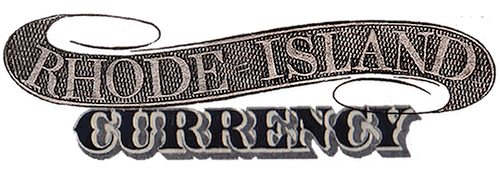Phenix Bank, Providence
As noted in 1891:
“The Phenix Bank was incorporated in October, 1833. Its first president was James F. Simmons, who continued until about 1843, when he was followed by Samuel B. Wheaton. He was succeeded by Edward Pearce in 1851. After about 30 years of service he was followed by Jonathan Chace in 1881. The capital of this bank in 1838 had reached $160,000; and in subsequent years it increased until in 1863 it reached $437,650. In 1865 it was reorganized as the Phenix National Bank, with a capital of $450,000… The first cashier was Jesse N. Olney, followed by Benjamin White, previous to 1838, who continued till 1875, when he was succeeded by George E. Martin, who for several years had served as assistant cashier…
“This bank was originally located at Pawtucket, under the name of Farmers’ and Mechanics’ Bank [which failed in 1829, during a time of statewide financial crisis], but afterward moved to Providence, where it received the new name. Here, in 1838, it was located at 39 Market street; in 1844 at 41 Market street; in 1852 at 7 What Cheer Building, where it remained until 1889, when it was domiciled at 58 Dorrance street, in the Narragansett Hotel building.” — Richard M. Bayles, ed. History of Providence County, Rhode Island, Volume I. New York: W. W. Preston, 1891.
In 1953, Phenix National Bank was absorbed by Rhode Island Hospital Trust.
There are two other banks in Rhode Island with similar names: The Phenix Village Bank of Warwick and The Phenix Bank of Westerly.



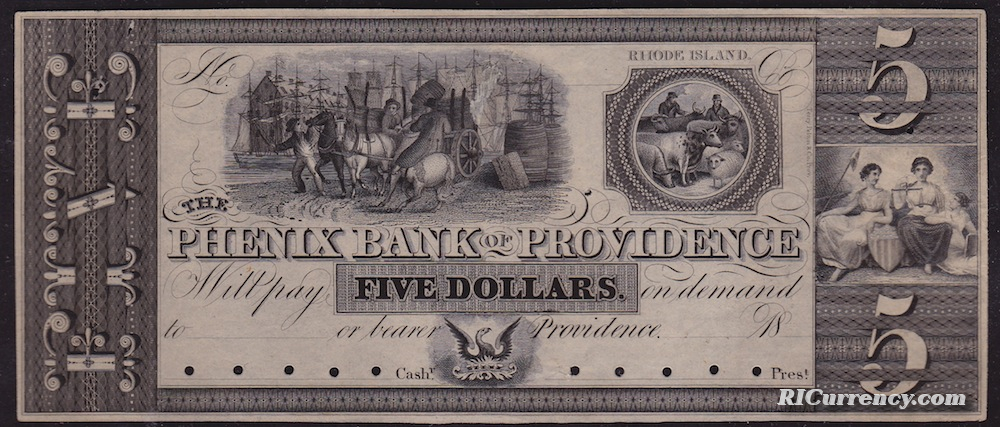
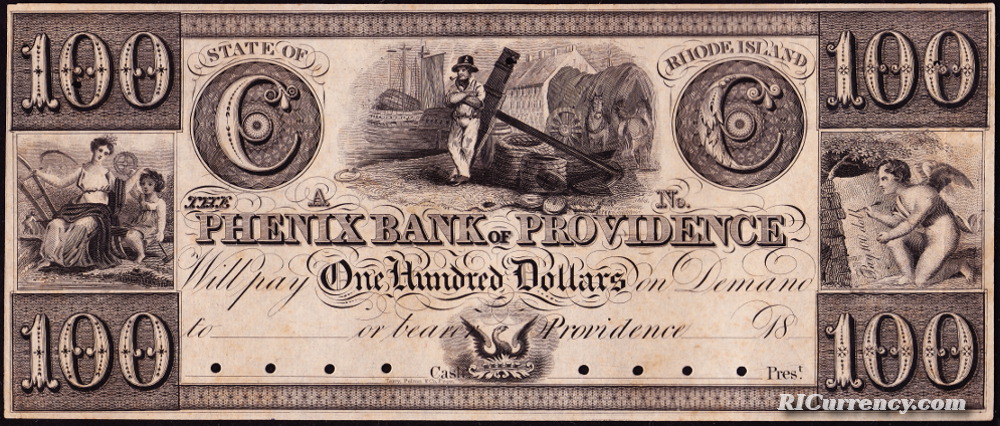






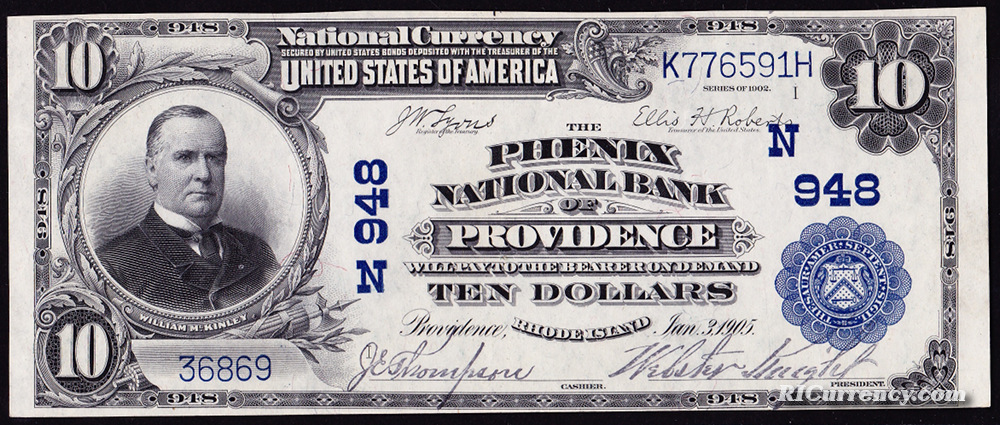
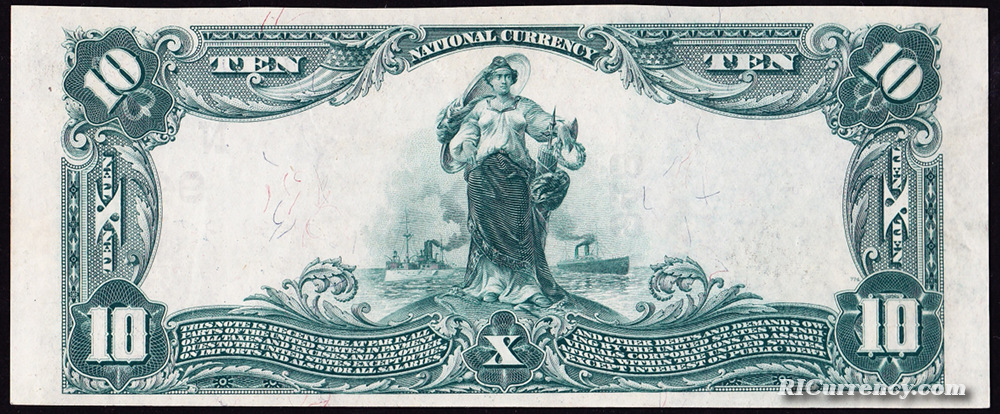


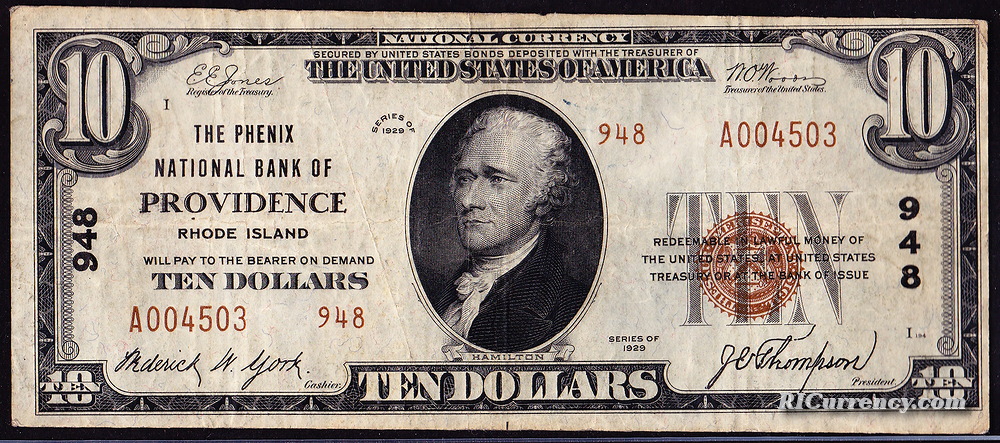
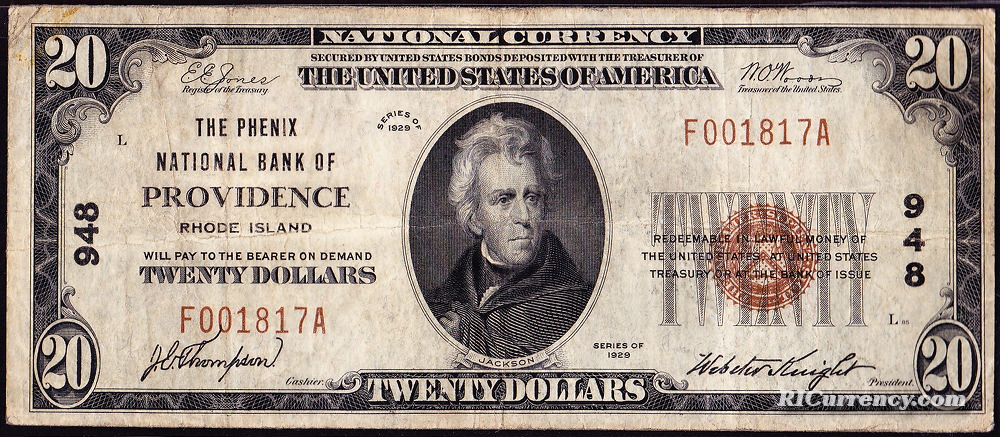
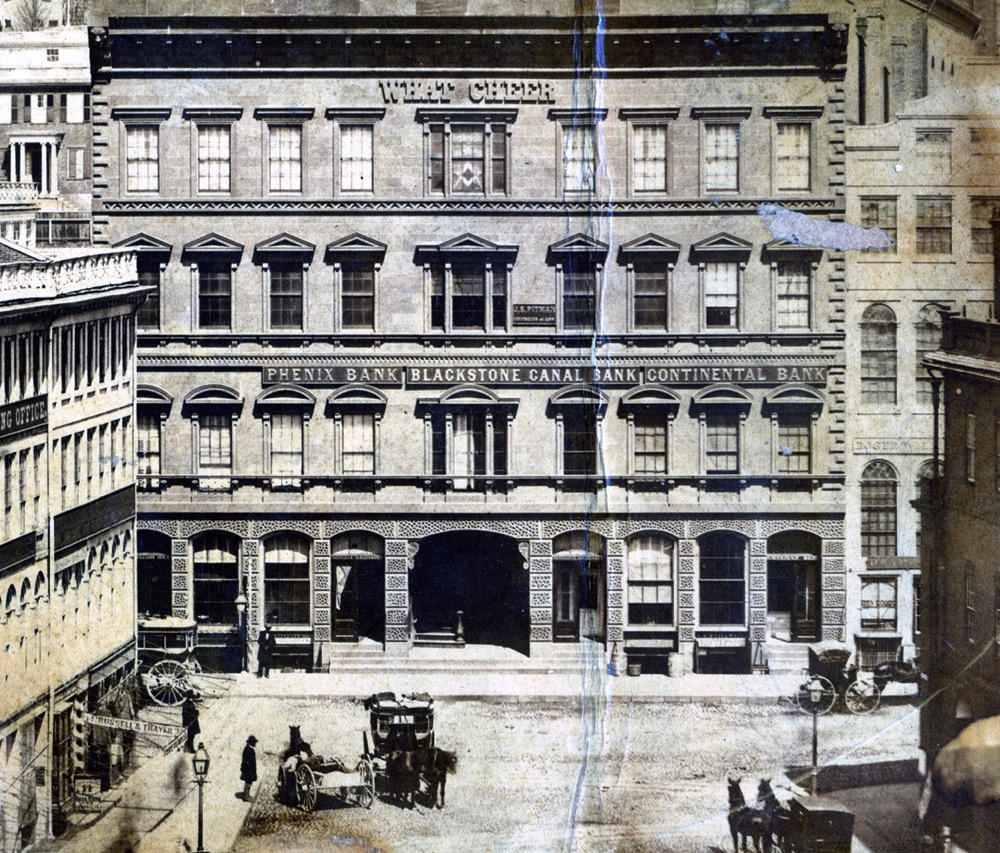
Office of the Phenix Bank in Market Square. Also home to the Continental Bank and the Blackstone Canal Bank.
What Cheer building, South Main Street, Providence, WC 0191. Rhode Island Collection, Providence Public Library, Providence, R.I. Reprinted with permission.
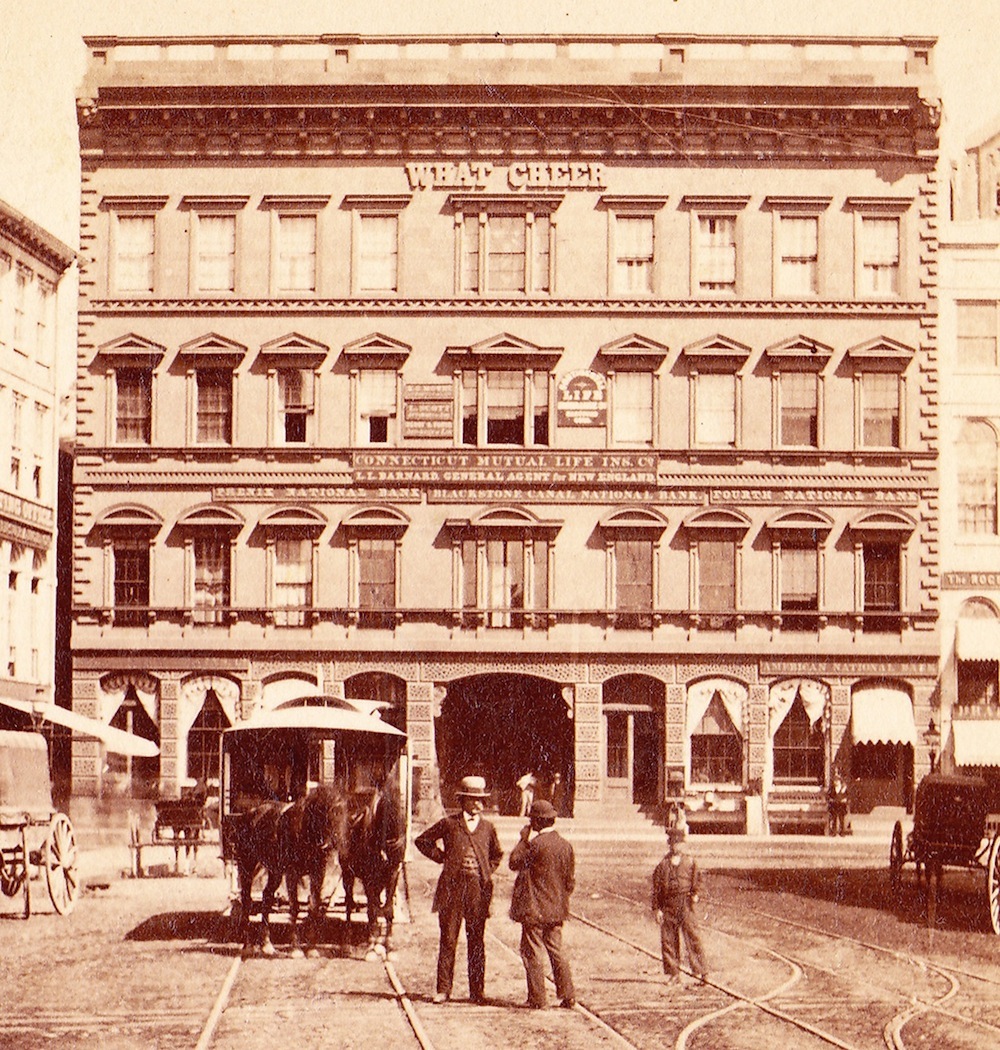
The What Cheer Building at the dawn of the national banking era. Home to the Phenix National Bank, the Blackstone Canal National Bank, the Fourth National Bank, the American National Bank and the Connecticut Mutual Life Insurance Company. The Roger Williams National Bank and the Globe National Bank were in the building adjacent to the right. (Rhode Island School of Design’s Chace Center now occupies this site on North Main Street.)
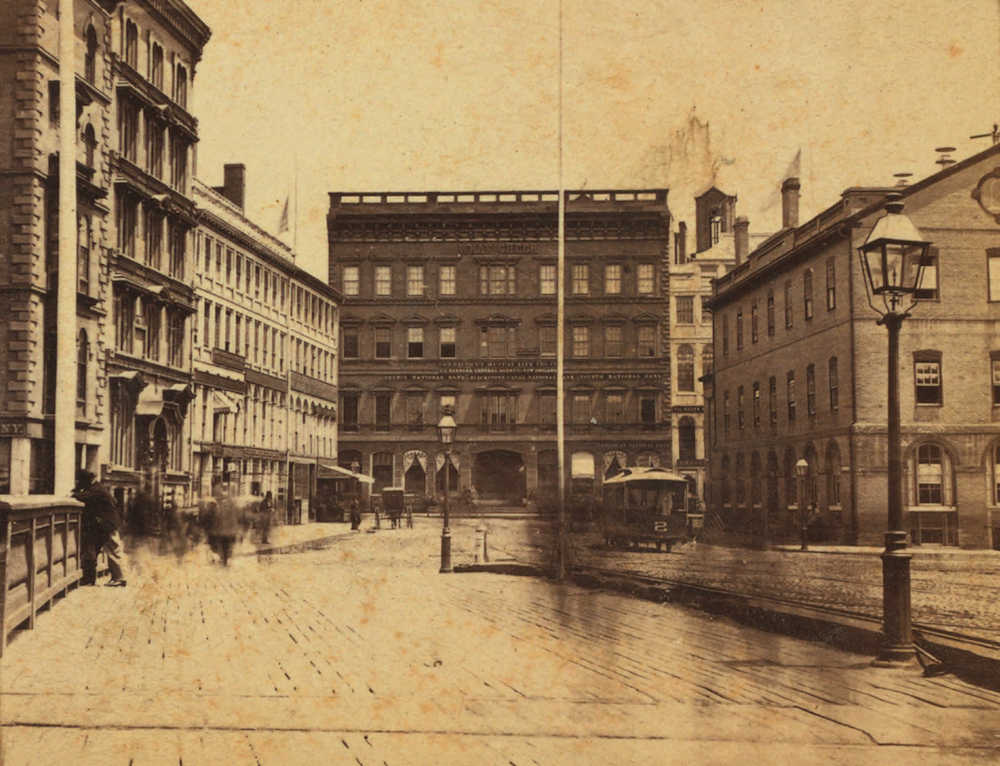
A wider view of Market Square in the late 19th century (Source: Wikipedia.)
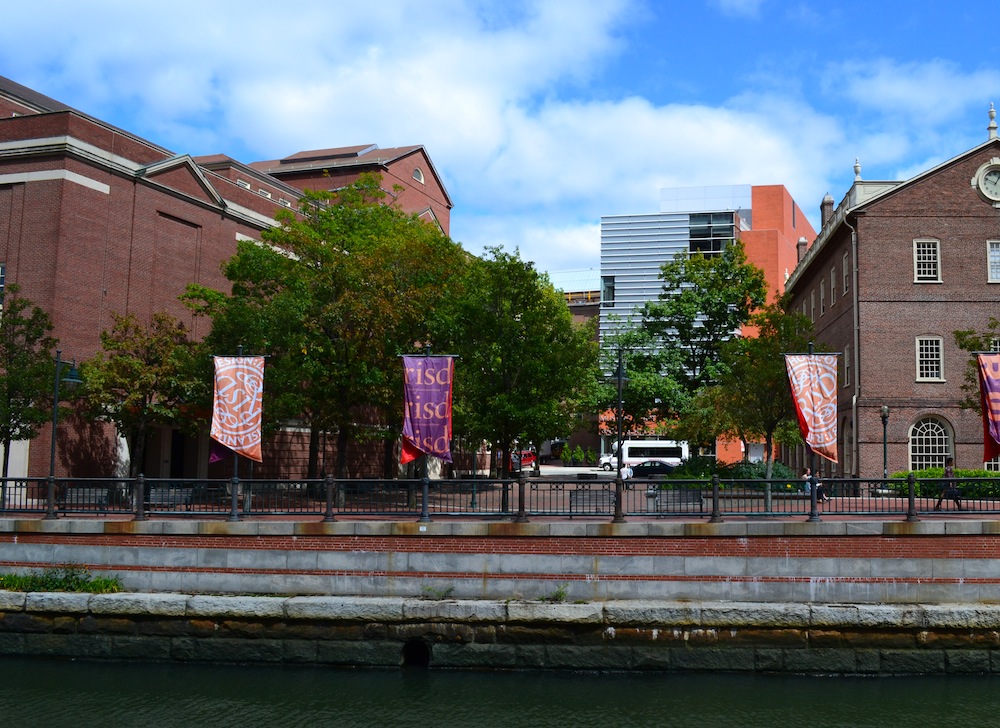
Market Square today. At some point after WWII, the What Cheer building was torn down and the location used as a parking lot. In 2008, the Rhode Island School of Design opened up the Chace Center, designed by Spanish architect Jose Rafael Moneo, on the former site of the What Cheer Building.

A blank bank check from the 1840s.
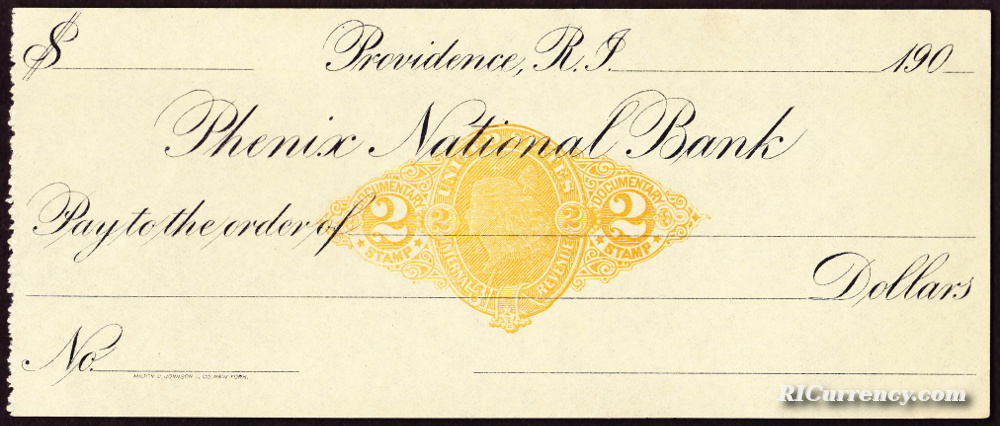
An early 20th-century check from the bank.
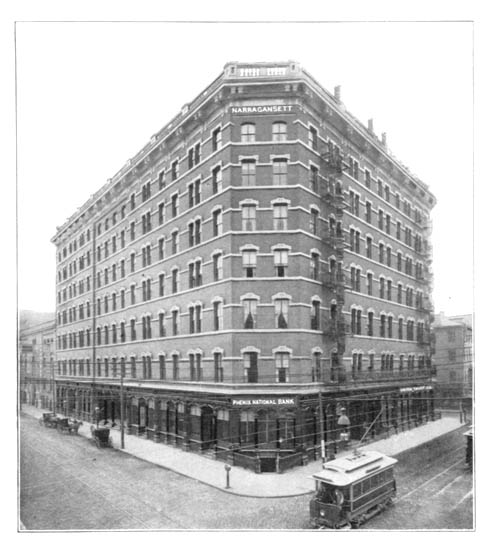
The Phenix National Bank office in the ground floor of the Narragansett Hotel, Weybosset and Dorrance Streets, sometime after 1899.
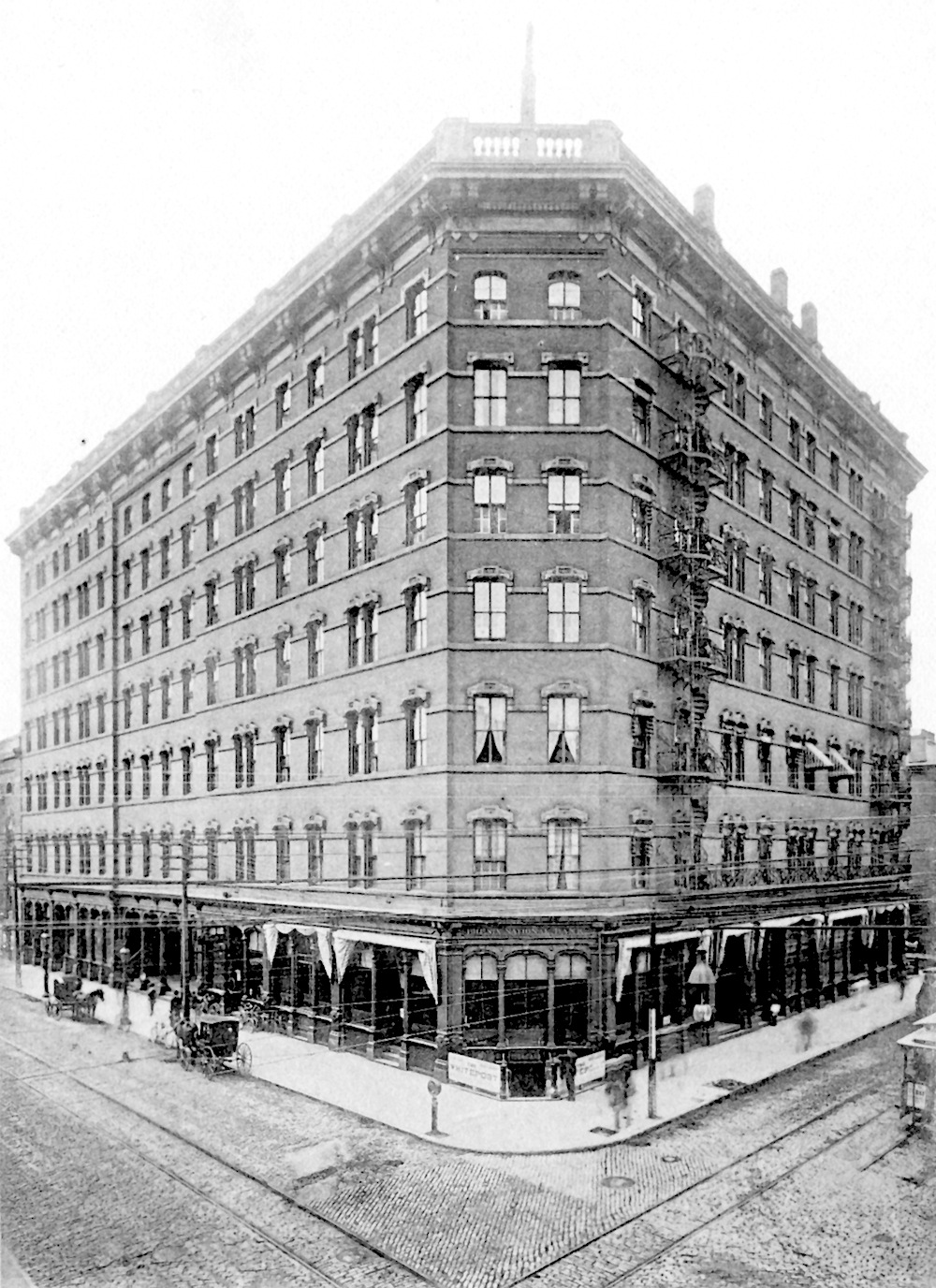
Another image of the Narragansett Hotel, with the bank’s ground floor corner office. Courtesy of the City Archives, City of Providence. Reprinted with permission.
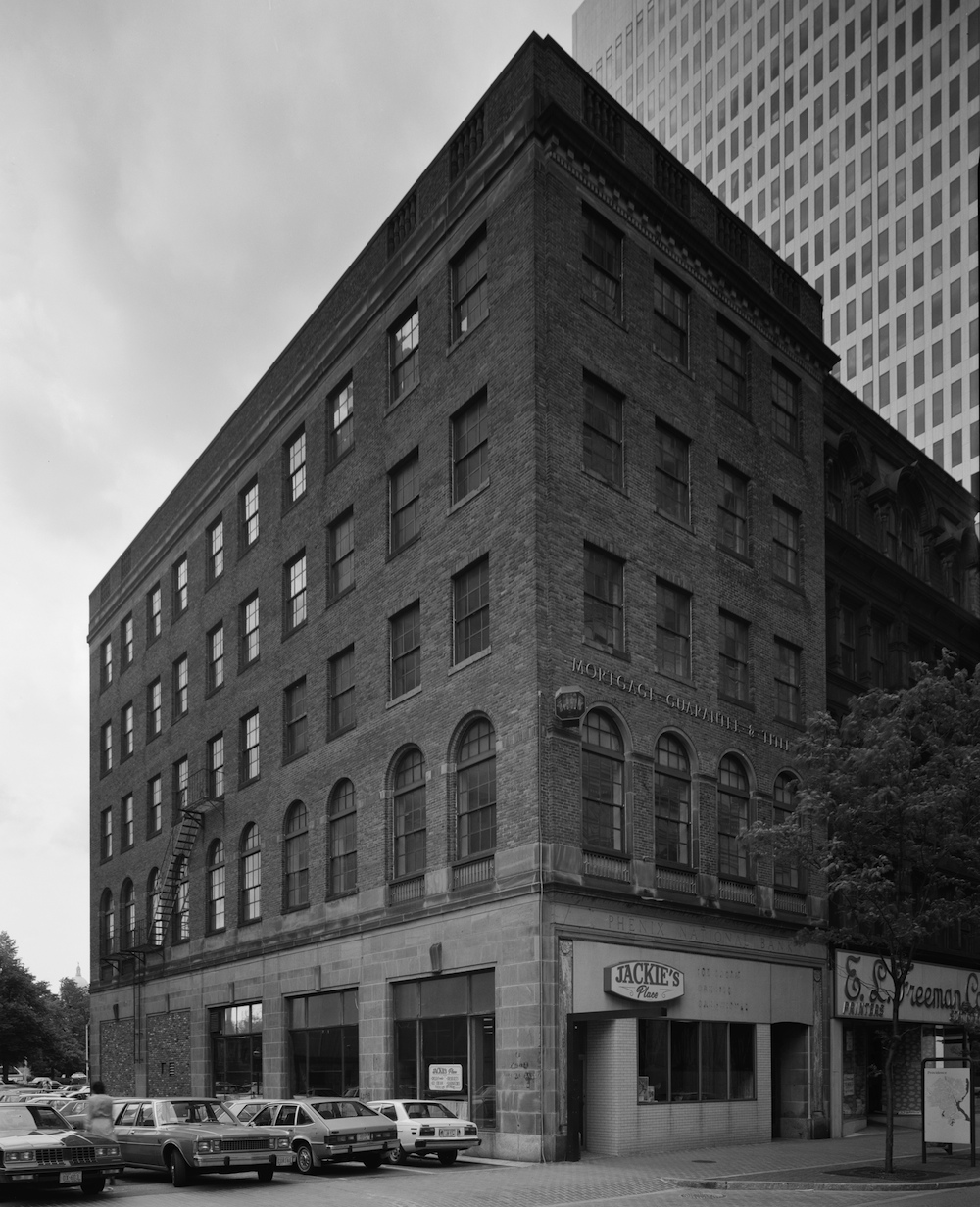
Former offices of the Phenix National Bank at 85-89 Westminster Street, in a circa 1970s photograph. (Source: Library of Congress.)
The bank’s name is visible above the first floor, on the right side of this image.
